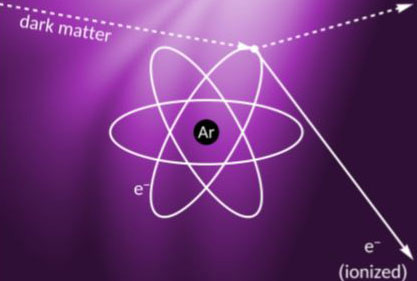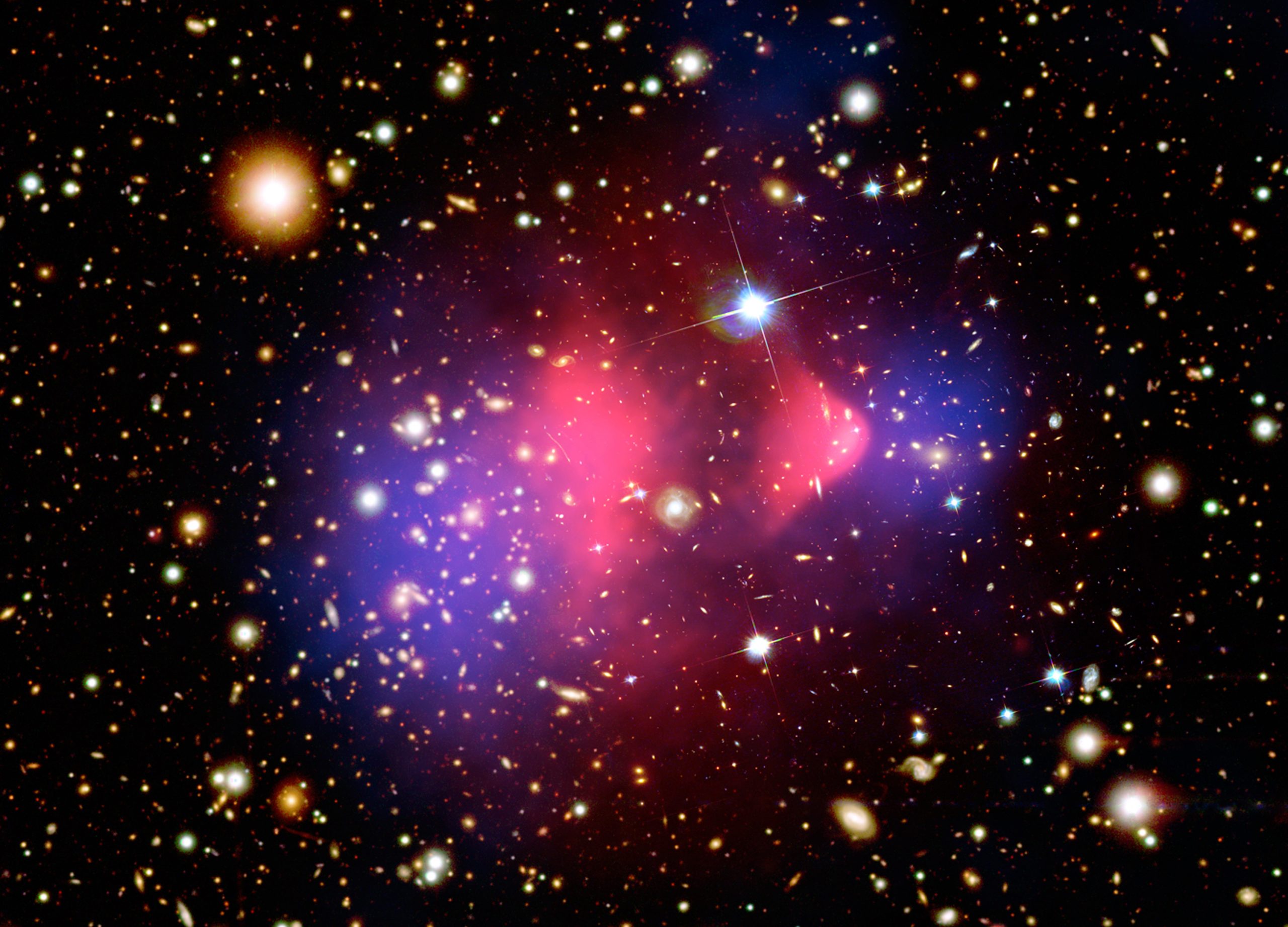New research by Chalmers and ETH Zurich, Switzerland, suggests a promising way of detecting elusive dark matter particles through previously unexplored atomic reactions in the detector material. The above figure is a composite image (optical, X-ray, computed dark matter) of the mass distribution in the globular cluster of galaxies. Photo credit: Chandra X-Ray Observatory, NASA / CXC / M. Weiss
New research by Chalmers in collaboration with the ETH Zurich in Switzerland suggests a promising way of detecting elusive dark matter particles through previously unexplored atomic reactions in the detector material.
The new calculations allow theorists to make detailed predictions about the type and strength of interactions between dark matter and electrons that were previously not possible.
“Our new study of these atomic reactions reveals material properties that have previously remained hidden. They could not be examined with any of the particles available today – only dark matter could reveal them, ”says Riccardo Catena, Associate Professor at the Institute for Physics in Chalmers.
For every star, galaxy or dust cloud visible in space, there is five times as much invisible material – dark matter. Discovery of ways to detect these unknown particles that are such a significant part of the Milky Way therefore has the highest priority in astroparticle physics. In the global search for dark matter, large detectors were built deep underground to try to catch the particles as they ricochet off atomic nuclei.
So far, these mysterious particles have escaped detection. According to the Chalmers researchers, one possible explanation could be that dark matter particles are lighter than protons and therefore do not cause the nuclei to recoil – imagine a ping pong ball colliding into a bowling ball. A promising way to overcome this problem could therefore be to shift the focus from nuclei to electrons, which are much lighter.
In their latest work, the researchers describe how particles of dark matter can interact with the electrons in atoms. They suggest that the rate at which dark matter can eject electrons from atoms depends on four independent atomic reactions – three of which were not previously identified. They calculated how electrons in argon and xenon atoms, used in today’s largest detectors, should react to dark matter.
The results were recently published in the journal Physical Review Research and carried out in a new collaboration with solid-state physicist Nicola Spaldin and her group at ETH. Your predictions can now be tested in dark matter observatories around the world.
“We tried to remove as many barriers to entry as possible. The paper will be published in a fully open access journal, and the scientific code to calculate the new atomic response functions is open source for anyone who wants to take a look under the hood of our paper, ”says Timon Emken, postdoc in the group Dark matter at the Institute for Physics in Chalmers.
Reference: “Atomic reactions to general interactions between dark matter and electrons” by Riccardo Catena, Timon Emken, Nicola A. Spaldin and Walter Tarantino, August 5, 2020, Physical Review Research.
DOI: h10.1103 / PhysRevResearch.2.033195
More about dark matter
What is the universe made of? This question has fascinated mankind for thousands of years. Yet it remains largely unanswered, as more than three-quarters of the matter in our universe is made up of particles so elusive that we don’t know what they are. These particles are called dark matter and do not emit or absorb radiation at observable wavelengths. Detecting unknown particles is a top priority for scientists around the world. To detect dark matter, the researchers are looking for rare interactions between dark matter and electrons in deep underground detectors with low background.

Photo credit: Chalmers University of Technology / Physical Review Research
There is indisputable evidence of the presence of dark matter in our universe. The evidence is based on the observation of unexpected gravitational effects in extremely diverse physical systems, including galaxies, galaxy clusters, the cosmic microwave background and the large-scale structure of the universe. While the European space satellite Planck has conclusively shown that dark matter makes up about 85 percent of all matter in the universe, its nature remains a mystery.
More about the scientific article
Read the article Atomic reactions to general interactions between dark matter and electrons in Physical Review Research. It was written by Riccardo Catena and Timon Emken in the Physics Department in Chalmers and Nicola Spaldin and by Walter Tarantino in the Materials Department at ETH Zurich in Switzerland.



